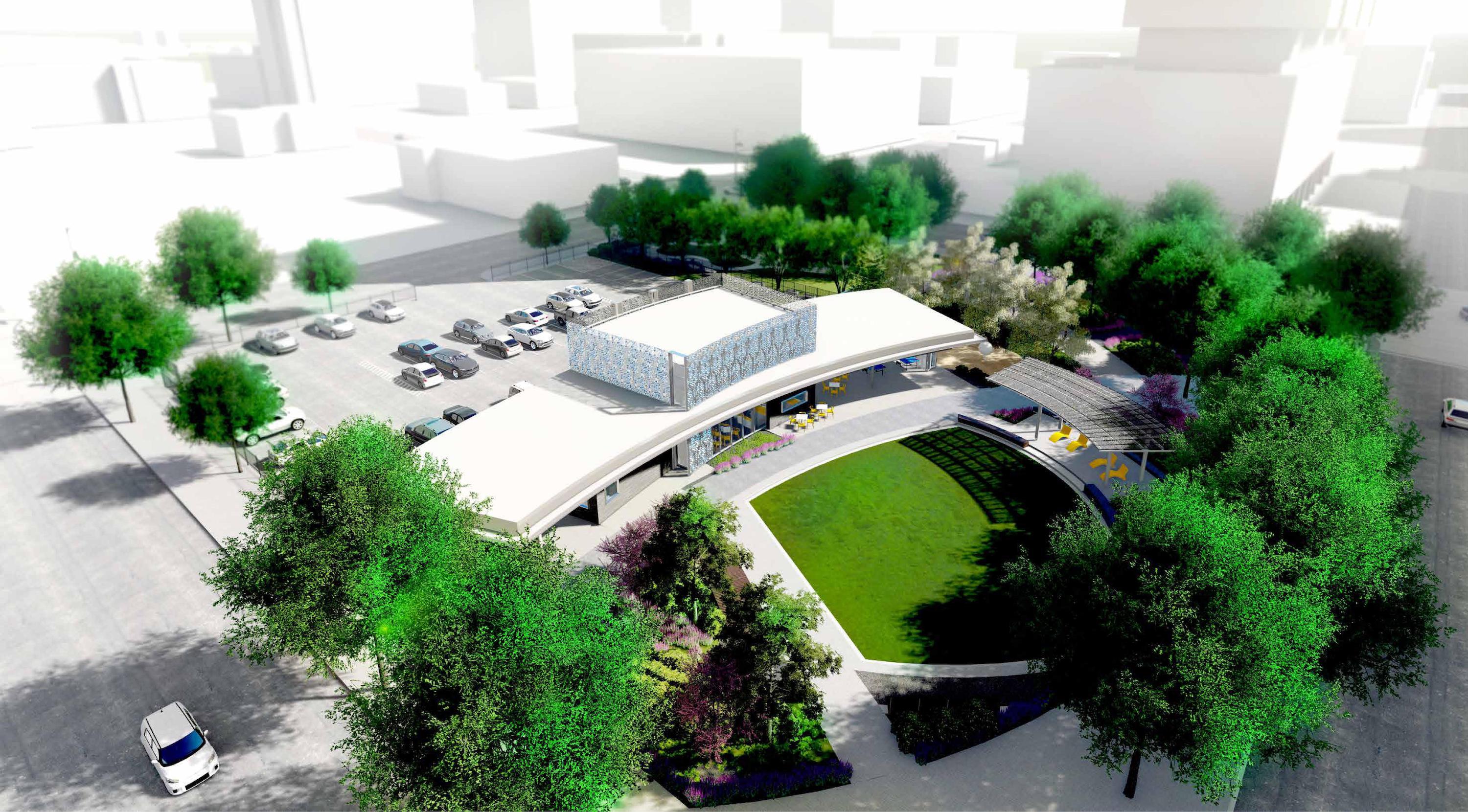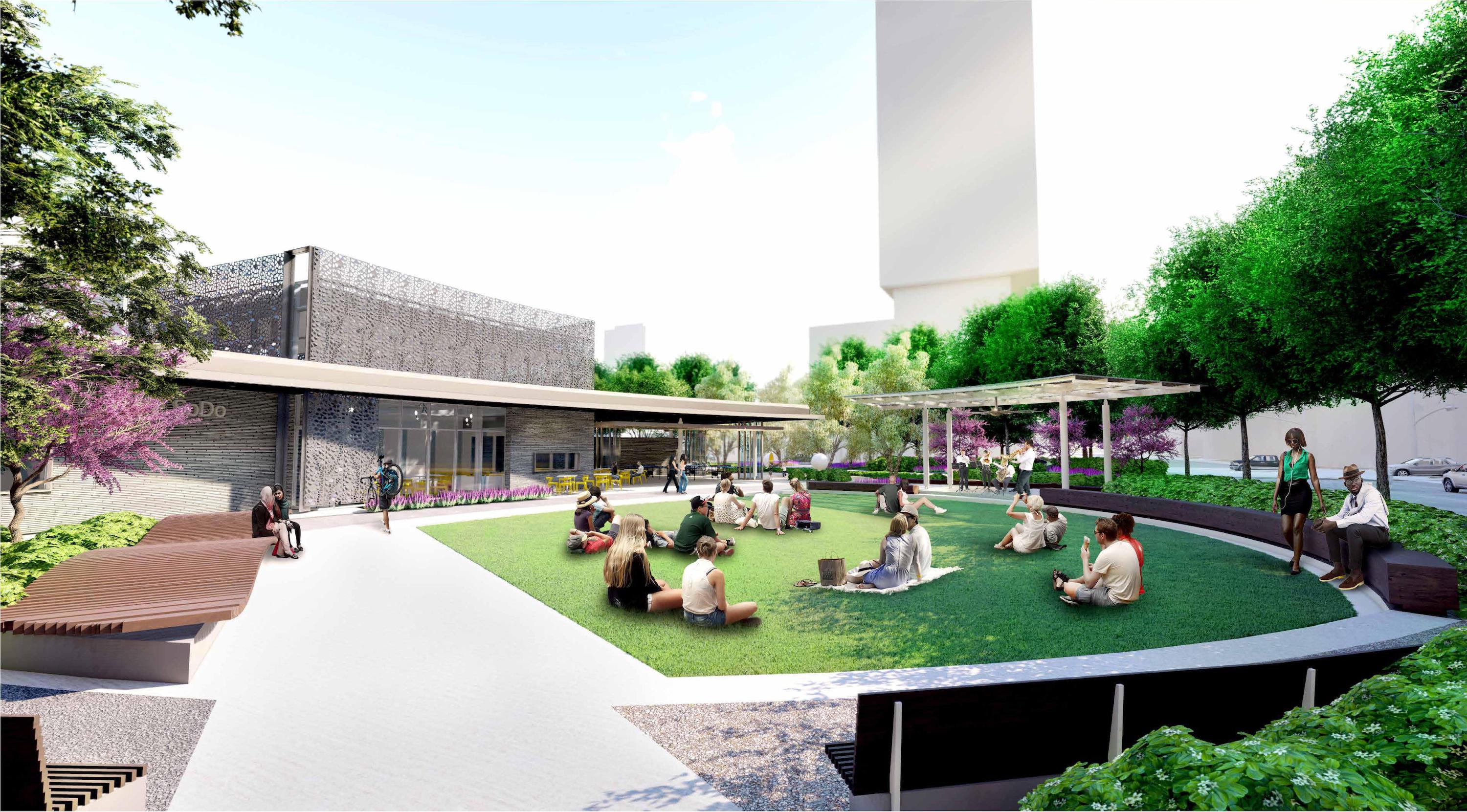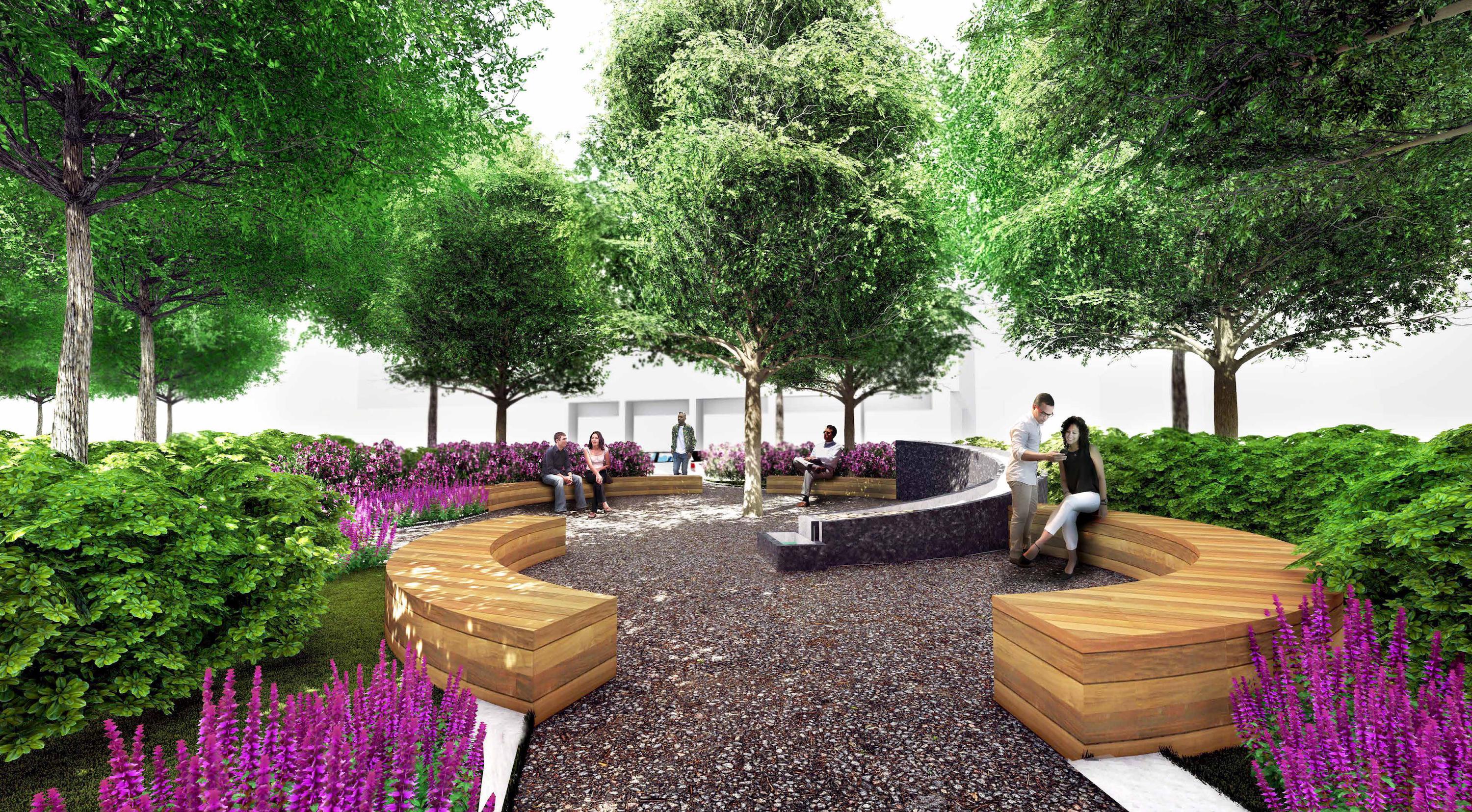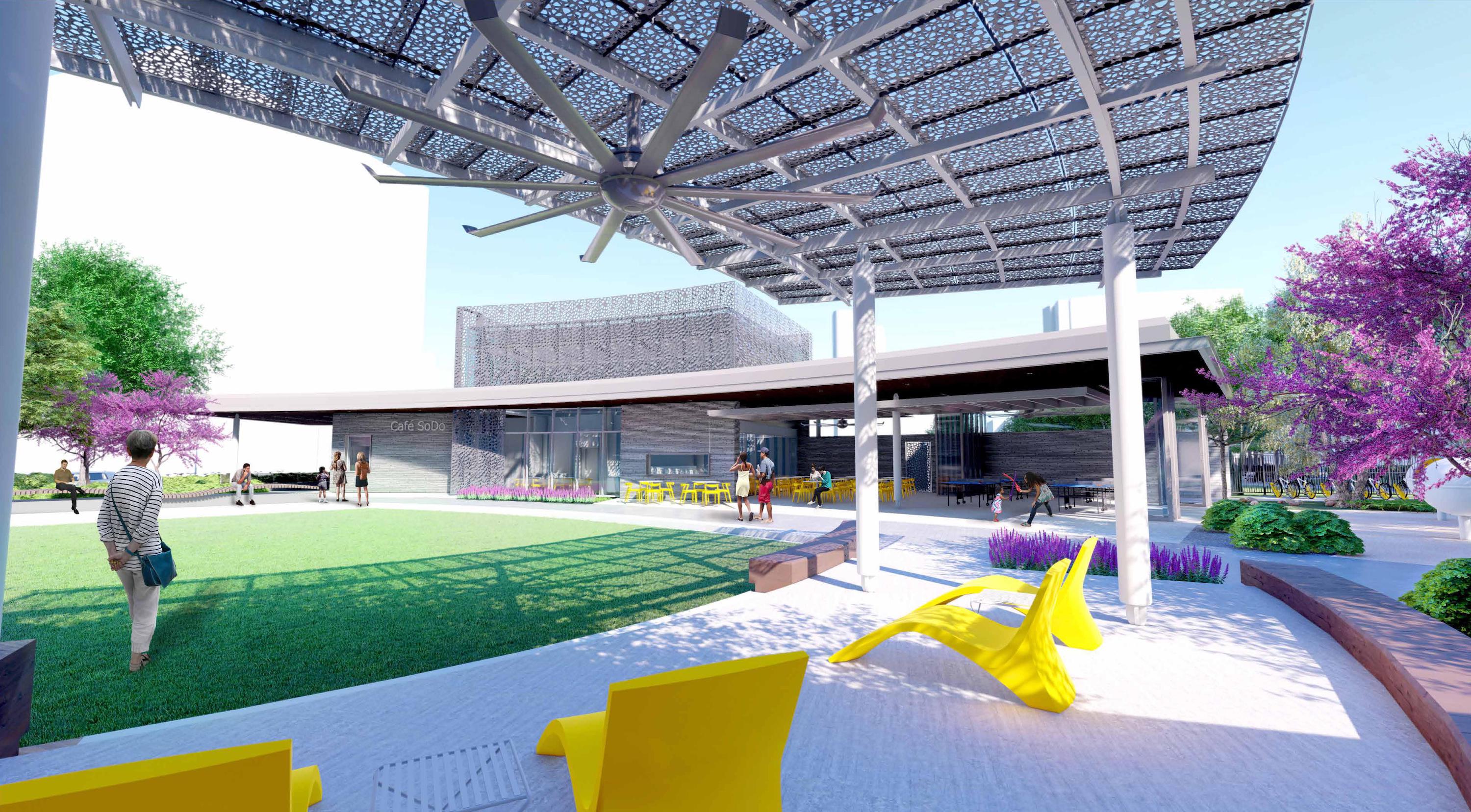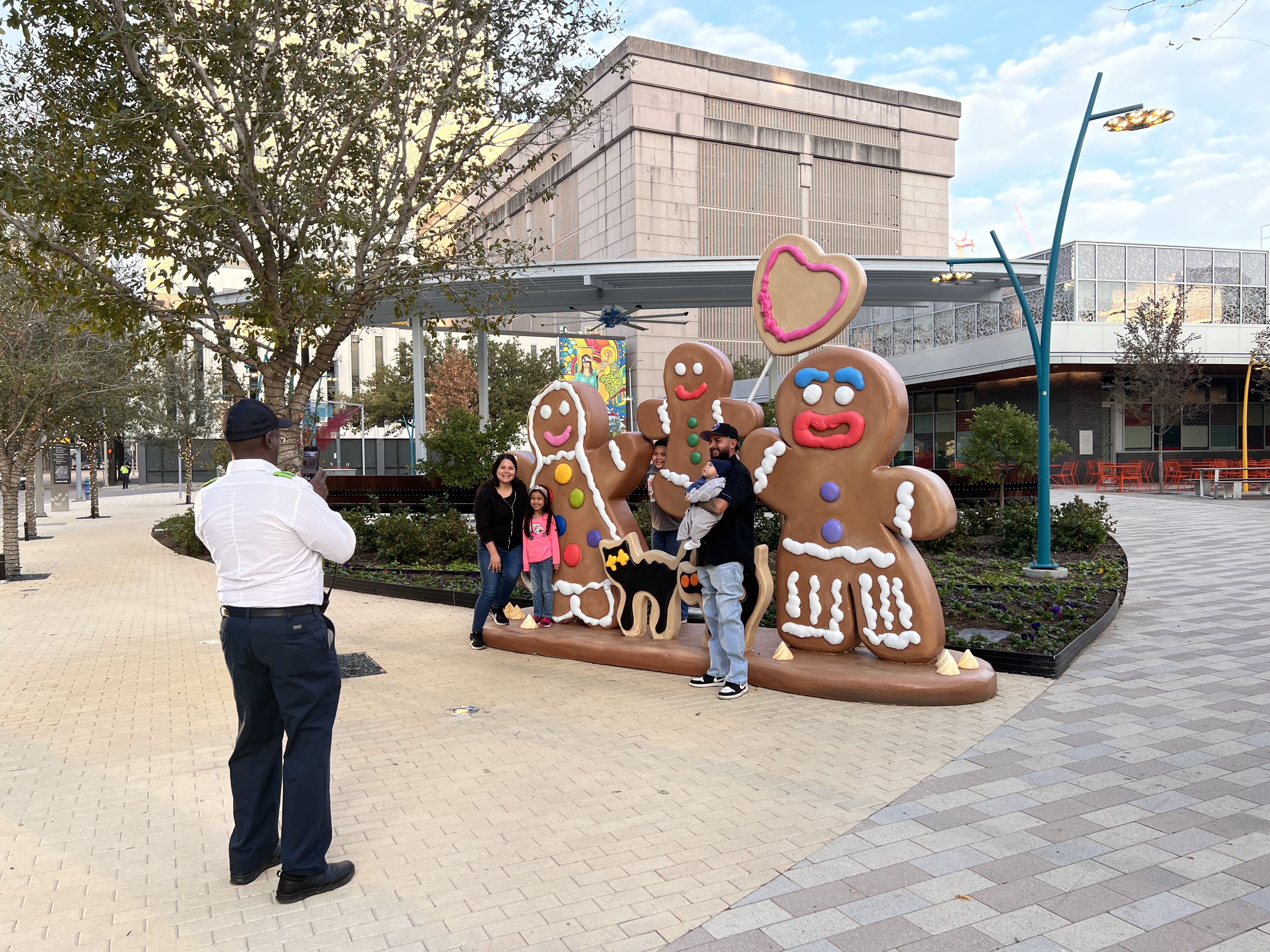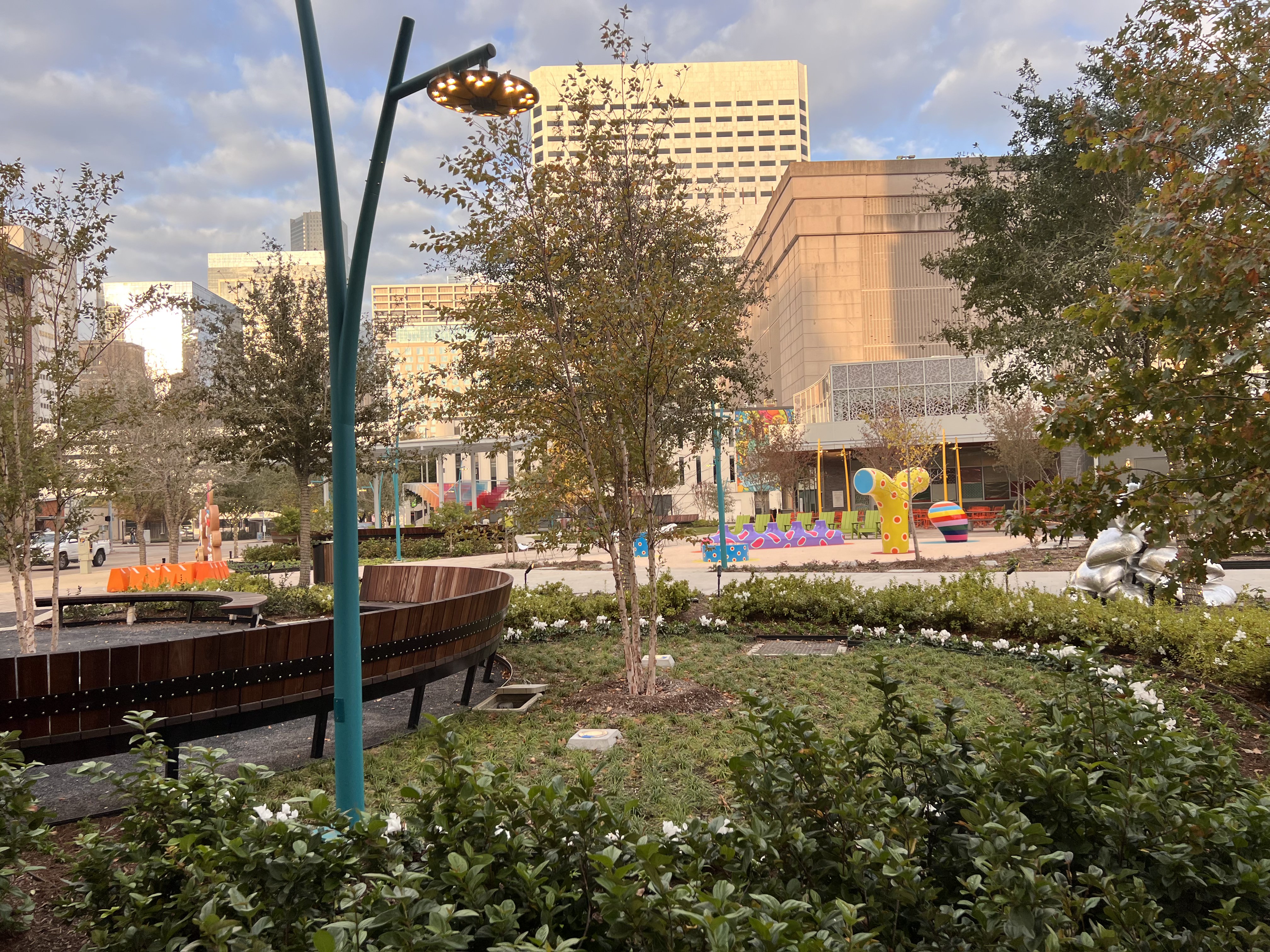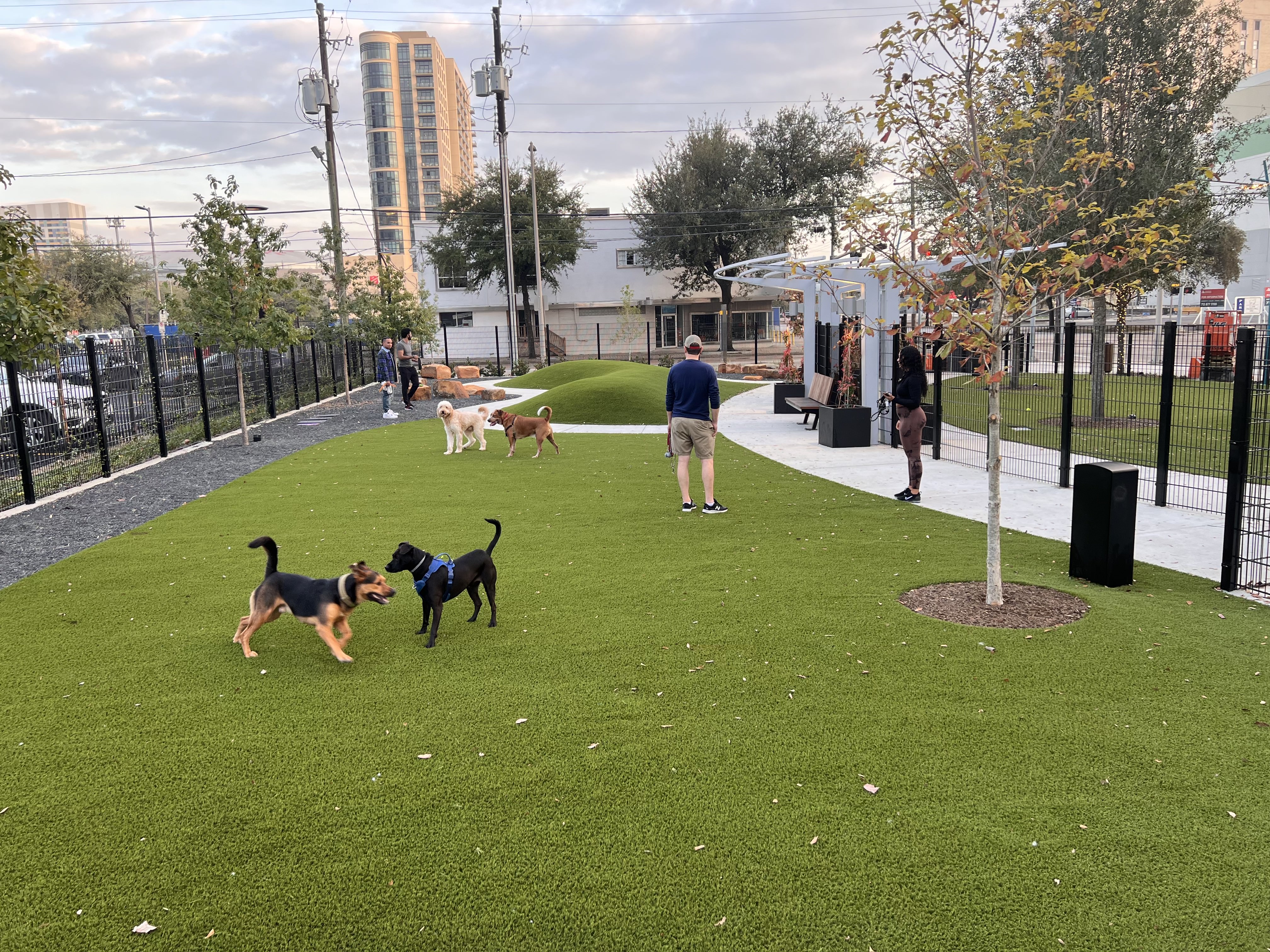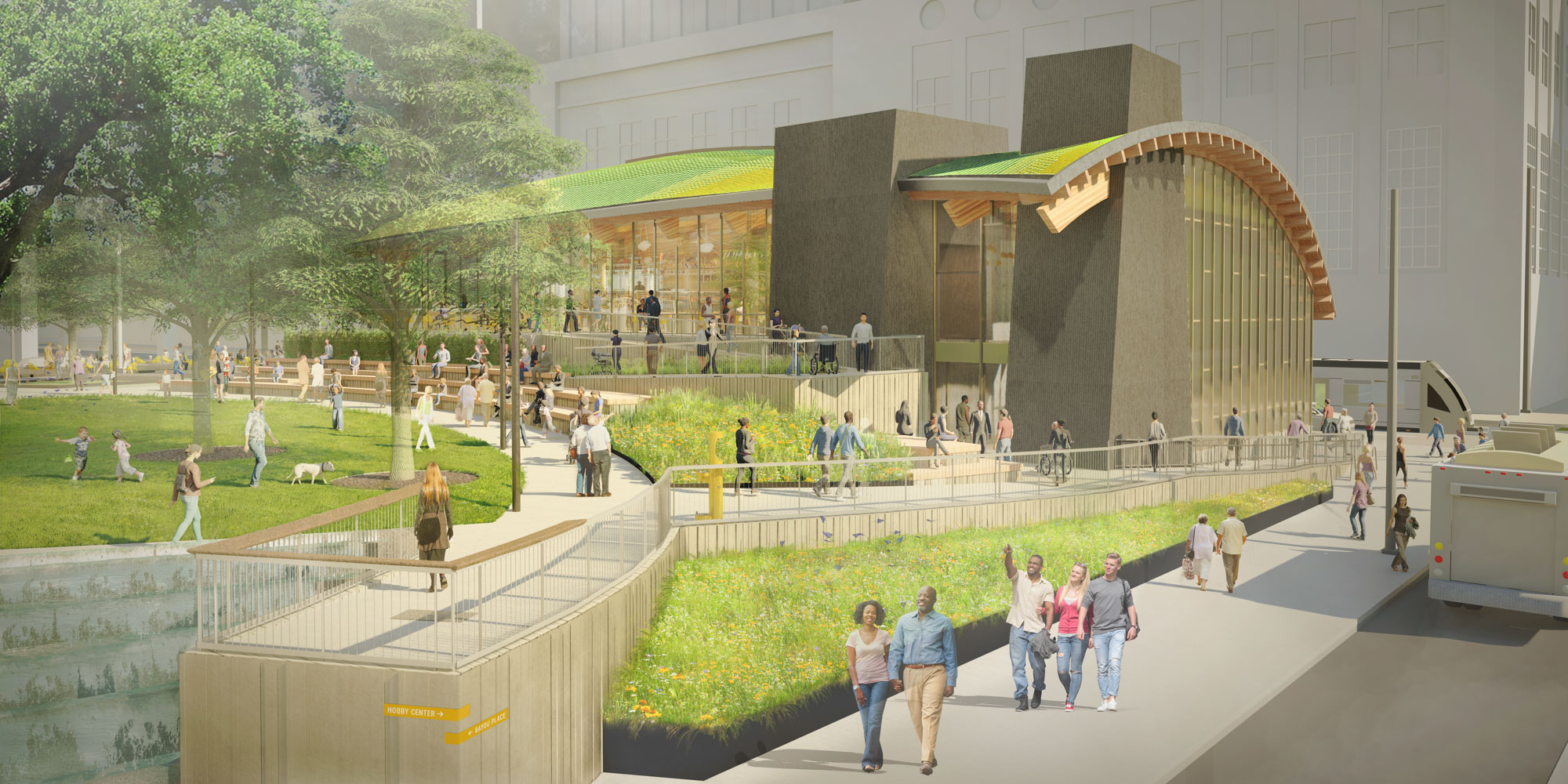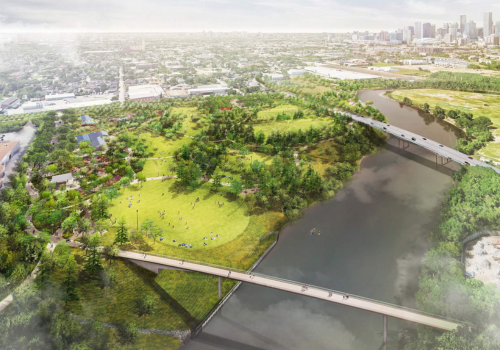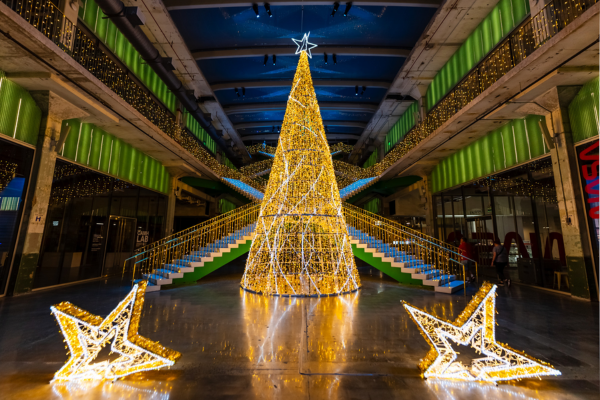Downtown Houston's Newest Park Increases Green Space Access
Published Dec 05, 2022 by Brina Morales
The official opening of downtown Houston’s newest park will mark a key milestone in the ongoing effort to improve the city’s prime commercial district – everyone living downtown will be within walking distance of a park.
Trebly Park is expected to celebrate its official opening early next year, but you may find some activity right now since the fencing is down and holiday installations are up. The park, located at the corner of Leeland and Fannin Streets near Toyota Center, is the Downtown Redevelopment Authority’s (DRA) latest project. The highly anticipated L-shaped green space has been under construction since last year and will include lush garden zones, a central lawn that will be used for events, dog runs, BCycle stations, a bike repair station, and a Tout Suite café. Visitors will also find an inaugural gateway installation by Quintessenz and a playscape titled “Whale Bone Dinner Party,” a six-piece, 7-foot-tall sculpture that will be the centerpiece of the park.
The new park comes as the southern zone of downtown experiences an increase in residential buildings. In 2021, The DRA said the new park would support the more than 1,700 new residential units developed in that area since 2012.
“Trebly Park implies that the park has much to offer those who visit it in terms of experience with ‘three times as much’ fun, play, interaction, relaxation and deliciousness,” Curtis Flowers, DRA board chair, said in a press release in March 2021. “We also hope the grounds will serve as a ‘third space,’ or communal space, for area residents, students, workers and visitors.”
@ghpartnership #houston #htx #houstontx #houstontexas #park #downtown ♬ original sound - Greater Houston Partnership
Trebly Park isn’t the only exciting green space project underway in downtown. Jones Plaza in the Theater District is being transformed into the Lynn Wyatt Square for the Performing Arts after the eponymous philanthropist’s $10 million donation. The reimagined block will include a new performing space, a restaurant and a shaded lawn with numerous gardens. Once completed, leaders behind the redevelopment hope it will attract new businesses to the area and reinvigorate the Theater District.
Downtown Houston has come a long way since it set on a journey to increase green space. It all started with Discovery Green in 2008, which has since welcomed more than 20 million visitors. You can find events, public art installations, two restaurants and more at the 12-acre urban park.
In 2010, the Houston Downtown Management District, Downtown Redevelopment Authority and the city’s Parks and Recreation Department redeveloped Market Square Park in the Historic District. It was transformed into a destination for visitors and residents with dog runs, central lawn, a plaza for performances and a Houston food staple, Niko Niko’s.
Other downtown parks include Sesquicentennial Park and Allen’s Landing along Buffalo Bayou. Allen’s Landing is named in honor of the landing of the Allen brothers, August Chapman and John Kirby, in Houston in 1836.
Together, these ultra-urban parks and green spaces are helping create a more dynamic downtown district that stretches well beyond the once business-only identity of the city’s core. Downtown today is a destination for the city’s diners and nightlife enthusiasts as well as a more attractive place to live for high-rise dwellers. A recent Houston Chronicle interview with Central Houston President Kris Larson promises more changes are on the horizon.
Learn more about living in Houston.
 The Houston Report
The Houston Report